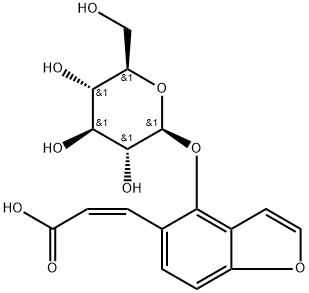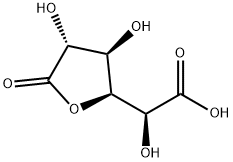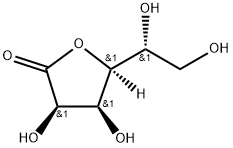2-ISOPROPOXYETHANOL
Synonym(s):Ethylene glycol monoisopropyl ether;Isopropylglycol
- CAS NO.:109-59-1
- Empirical Formula: C5H12O2
- Molecular Weight: 104.15
- MDL number: MFCD00002866
- EINECS: 203-685-6
- SAFETY DATA SHEET (SDS)
- Update Date: 2024-12-18 14:08:52

What is 2-ISOPROPOXYETHANOL?
Chemical properties
colourless liquid
The Uses of 2-ISOPROPOXYETHANOL
Ethylene glycol monoisopropyl ether (EGIE) is used as a solvent for resins, dyes, and cellulose esters, and in coatings..
The Uses of 2-ISOPROPOXYETHANOL
2-Isopropoxyethanol was used to study the products of the gas-phase reactions of OH radical with n-butyl methyl ether and 2-isopropoxyethanol in the presence of NO. 2-Isopropoxyethanol was used to develop methodology for evaluating electromagnetic sensor performance in nonrelaxing and nonconducting (e.g., sandy soil) media
The Uses of 2-ISOPROPOXYETHANOL
Solvent in latex paints, lacquers, and other coatings, resins, coalescing aids, and coupling solvents
General Description
A clear liquid. Density 0.903 g / cm3. Flash point 114°F. An irritant.
Air & Water Reactions
Flammable. Oxidizes in air to form unstable peroxides that may explode spontaneously [Bretherick, 1979 p.151-154, 164]. Water soluble .
Reactivity Profile
2-ISOPROPOXYETHANOL acts both as an alcohol and ether. May react violently with strong oxidizing agents. May generate flammable and/or toxic gases with alkali metals, nitrides, and other strong reducing agents. May initiate the polymerization of isocyanates and epoxides.
Hazard
Combustible liquid with flash p 49C. Toxic by skin absorption.
Health Hazard
EGIE shows low toxicity from inhalation, ingestion, and skin absorption. The toxic symptomsaresimilartothoseproducedbythe butyl ether of the ethylene glycol. The effects noted in rats from exposure to 1000 ppm for 6 hours were hemoglobinuria, anemia, and lung congestion (Gage 1970). Other effectsobservedwereincreasesintheosmotic fragility of the red blood cells. Such effects were manifested at EGIE concentrations of >200 ppm. A 4-hour exposure to 4000 ppm was lethal to rats. In human exposure to this compound can result in anemia
LD50 value, oral (rats): 5660 mg/kg
No testicular toxicity was observed in rats from a single exposure to 3500 ppm of EGIE in air (Doe 1984)..
Health Hazard
May be harmful by inhalation, ingestion or skin absorption. May cause skin and eye irritation.
Fire Hazard
Special Hazards of Combustion Products: Emits toxic fumes when heated upon decomposition.
Waste Disposal
Chemical incineration is the most suitable method of destruction. Drain disposal may be done for small amounts of EGIE.
Properties of 2-ISOPROPOXYETHANOL
| Melting point: | -60 °C |
| Boiling point: | 42-44 °C13 mm Hg(lit.) |
| Density | 0.903 g/mL at 25 °C(lit.) |
| vapor pressure | 5.99 hPa (25 °C) |
| refractive index | n |
| Flash point: | 114 °F |
| storage temp. | Store below +30°C. |
| solubility | >100g/l soluble |
| form | Liquid |
| pka | 14.47±0.10(Predicted) |
| color | Colorless to Almost colorless |
| explosive limit | 1.6-13.0%(V) |
| Water Solubility | It is soluble in water. |
| BRN | 1732184 |
| Exposure limits | TLV-TWA skin 25 ppm (106 mg/m3) (ACGIH).
. |
| Stability: | Stable. Incompatible with strong oxidizing agents. Combustible. |
| CAS DataBase Reference | 109-59-1(CAS DataBase Reference) |
| EPA Substance Registry System | Isopropoxyethanol (109-59-1) |
Safety information for 2-ISOPROPOXYETHANOL
| Signal word | Warning |
| Pictogram(s) |
 Flame Flammables GHS02  Exclamation Mark Irritant GHS07 |
| GHS Hazard Statements |
H226:Flammable liquids H315:Skin corrosion/irritation H319:Serious eye damage/eye irritation |
| Precautionary Statement Codes |
P210:Keep away from heat/sparks/open flames/hot surfaces. — No smoking. P233:Keep container tightly closed. P280:Wear protective gloves/protective clothing/eye protection/face protection. P303+P361+P353:IF ON SKIN (or hair): Remove/Take off Immediately all contaminated clothing. Rinse SKIN with water/shower. P305+P351+P338:IF IN EYES: Rinse cautiously with water for several minutes. Remove contact lenses, if present and easy to do. Continuerinsing. |
Computed Descriptors for 2-ISOPROPOXYETHANOL
| InChIKey | HCGFUIQPSOCUHI-UHFFFAOYSA-N |
2-ISOPROPOXYETHANOL manufacturer
Viswaat Chemicals Limited
New Products
(S)-3-Aminobutanenitrile hydrochloride 4-Methylphenylacetic acid N-Boc-D-alaninol N-BOC-D/L-ALANINOL Tert-butyl bis(2-chloroethyl)carbamate 3-Morpholino-1-(4-nitrophenyl)-5,6-dihydropyridin- 2(1H)-one Furan-2,5-Dicarboxylic Acid Tropic acid 1-Bromo-3,5-Di-Tert-Butylbenzene S-2-CHLORO PROPIONIC ACID ETHYL ISOCYANOACETATE 2-Bromo-1,3-Bis(Dimethylamino)Trimethinium Hexafluorophosphate 4-IODO BENZOIC ACID 3-NITRO-2-METHYL ANILINE 1-(2,4-DICHLOROPHENYL) ETHANAMINE (2-Hydroxyphenyl)acetonitrile 4-Bromopyrazole 2-(Cyanocyclohexyl)acetic acid 4-methoxy-3,5-dinitropyridine 1-(4-(aminomethyl)benzyl)urea hydrochloride 2-aminopropyl benzoate hydrochloride diethyl 2-(2-((tertbutoxycarbonyl)amino) ethyl)malonate tert-butyl 4- (ureidomethyl)benzylcarbamate Ethyl-2-chloro((4-methoxyphenyl)hydrazono)acetateRelated products of tetrahydrofuran








You may like
-
 2-Isopropoxyethanol CAS 109-59-1View Details
2-Isopropoxyethanol CAS 109-59-1View Details
109-59-1 -
 Isopropoxyethanol, 99% CAS 109-59-1View Details
Isopropoxyethanol, 99% CAS 109-59-1View Details
109-59-1 -
 Ethylene Glycol Monoisopropyl Ether CAS 109-59-1View Details
Ethylene Glycol Monoisopropyl Ether CAS 109-59-1View Details
109-59-1 -
 2-Isopropoxyethanol CAS 109-59-1View Details
2-Isopropoxyethanol CAS 109-59-1View Details
109-59-1 -
 2-Isopropoxyethanol CAS 109-59-1View Details
2-Isopropoxyethanol CAS 109-59-1View Details
109-59-1 -
 109-59-1 Isopropyl Glycol 99%View Details
109-59-1 Isopropyl Glycol 99%View Details
109-59-1 -
 109-59-1 99%View Details
109-59-1 99%View Details
109-59-1 -
 118753-70-1 98+View Details
118753-70-1 98+View Details
118753-70-1